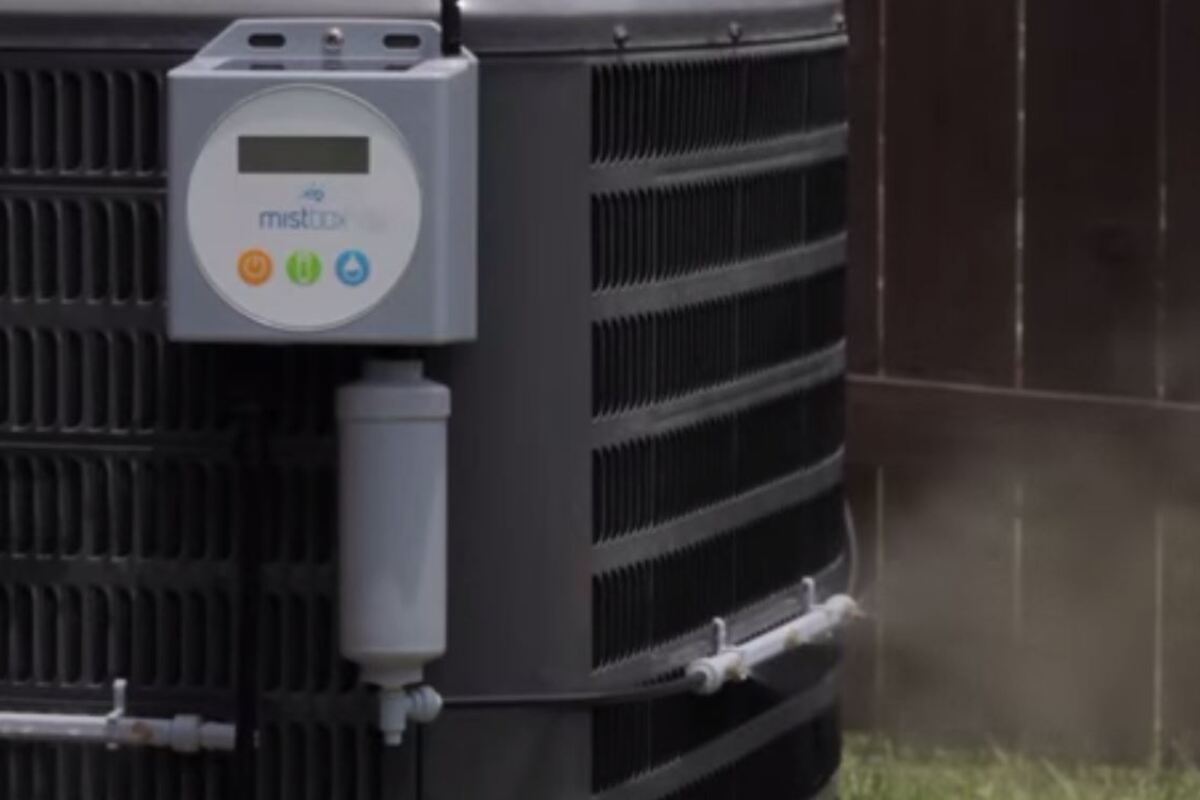Air conditioners are a bit of a paradox. On the one hand, they're most needed in the hottest weather, but on the other, the hottest days are when air conditioners are least efficient. Mistbox is an add-on technology for domestic air conditioners that uses a water mist to pre-cool the air conditioner, increasing its efficiency and lowering energy costs.
Domestic air conditioners work on the same principle as a refrigerator. A pump compresses a volatile gas into a liquid and circulates it through a coil. A fan blows warm air from the house over the coil, which expands the liquid back into a gas and cools the air. The gas is then circulated back to a second coil outside the house, where outside air carries away the heat before the gas is condensed and compressed back into a liquid to start the cycle over again.
It's a process that does the job, but what it gains in cooling it lacks in efficiency. The air conditioner is essentially a heat engine operating in reverse and its efficiency depends on the temperature of the outside air. If it's cold outside, the cycle is more efficient because the outside coil carries away the heat more effectively. But if it's hot, then the cycle is less efficient and the conditioner must work harder and use more energy for the same level of cooling.

According to its creators, the Mistbox is a simple device that can be retrofitted to central air conditioners that improves their efficiency and reduces operating costs by pre-cooling the incoming outside air used to cool the condensing coil.
It works by evaporative cooling, which is the same principle as the system that keeps the human body cool. The human body puts out as much heat as a 100 watt incandescent bulb, and without a cooling system we'd all die of heat exhaustion in short order. The body is kept cool by a constant flow of sweat to the skin's surface. As this sweat evaporates, it carries away the excess heat, so the body maintains a constant temperature.
This same principle is used in a number of artificial cooling systems. Large buildings and factories often use evaporative cooling to maintain the air temperature, and domestic versions are common in hot, dry areas, such as the southwest United States, where the low humidity makes evaporation so efficient that it's an inexpensive alternative to other forms of air conditioning.
Mistbox blows a fine spray of water into the compressor intake of an existing domestic compressive air conditioner, which pre-cools the incoming air and increases the conditioner's efficiency. That may make it sound like a glorified garden mister, but it the Mistbox also includes a computer running algorithms to optimize its operation by gathering data from sensors monitoring the ambient temperature, sound, vibration, light, and electromagnetic fields to release the mist at the right time in calculated amounts.

Another way that Mistbox tries to increase savings is by means of the 96 x 54 mm solar panel that recharges the 7.2 V NiMh battery that powers the unit, which means there's no complicated wiring installation required. In addition, the unit can be controlled using either the icon-based 22 x 77 mm display or by connecting wirelessly to the Mistbox app, which also allows the user to track power consumption and savings.
The company says that the Mistbox can be installed on existing central air conditioners in five minutes with a screwdriver. The four mist bars are mounted on the intake grill using bespoke hooks or zip ties, while the control unit has a special mounting bracket. Water is brought in from the domestic supply using an included 30-ft (9-m) hose and adapter set. There's also a special water filtration system to prevent scaling and corrosion and is claimed to increase the life of both the Mistbox and the air conditioner. The company says that the technology is install-and-forget with only an annual water filter change.
The Mistbox is available for US$449 and in the United States is eligible for a 30 percent Federal Green Tax Credit.
The video below explains how Mistbox works.
Source: Mistbox












